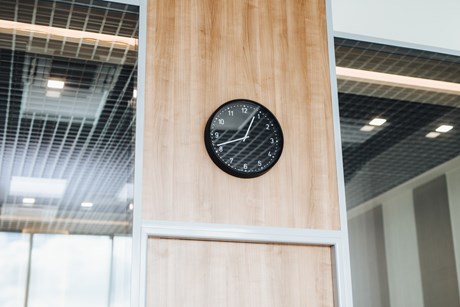10 Expert Tips to Keep Your Office Cool
blog 13 May 2025
In the UK, we're not strangers to unpredictable weather - but when a heatwave strikes, it still seems to somehow catch us completely off guard!
Unlike countries built for consistent high temperatures, many British offices, homes, and commercial spaces aren't equipped with central air conditioning. That means when the mercury rises, offices can become pretty uncomfortable - and productivity can plummet.
Hot work environments aren’t just unpleasant - they’re a serious barrier to wellbeing and performance.
Overheating can lead to fatigue, poor concentration, headaches and even heat-related illnesses. Tempers can fray, and suddenly even the most focused team can feel sluggish, irritable, and unproductive.
And let's be honest: when you’re sticking to your chair by 11am, even simple tasks feel like an uphill battle!
But staying cool doesn’t have to mean blasting fans all day or watching your electricity bill spiral out of control.
With a few smart tweaks and some strategic thinking, you can create a more comfortable, more productive environment - even in the peak of summer.
Here’s how…
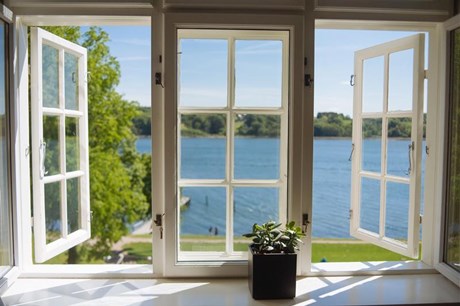
1. Maximise natural ventilation early & late in the day
In many UK buildings - especially older ones - ventilation isn't always top of the design brief.
But the air outside is often cooler than inside during early mornings and late evenings, particularly during a heatwave.
Making the most of this natural temperature difference can be one of the simplest and most effective ways to cool down your workspace - without touching a thermostat.
What to do: Open windows and doors in the early morning (before 9am) and again in the evening (after 6am), when outdoor temperatures are lower.
Why it works: During these times, the outside air is cooler than your indoor space. Opening windows on opposite sides of the building creates cross-ventilation, allowing hot, stale air to escape while drawing in cooler air. Close them again once the day heats up to trap the cooler air inside.
Try this: Create a breeze tunnel by opening a window on the shady side of your building and another on the sunny side, using fans to help draw air through.
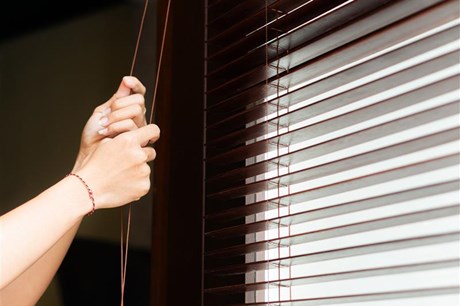
2. Block out direct sunlight
Even a single sun-facing window can turn your office into a greenhouse.
While the UK may not get relentless sunshine, during summer spells, direct sunlight can overheat a room really quickly.
Passive shading is a highly underrated strategy - simple to implement and incredibly effective at preventing heat from building up in the first place.
What to do: Use blinds, curtains, reflective films, or even temporary shading like cardboard or external covers to block sunlight from entering windows - especially on south-facing sides.
Why it works: A large proportion of unwanted heat comes from solar gain through windows. Shading cuts this dramatically, keeping indoor temperatures stable.
Try this: Hold your hand near a sunlit windowpane - feel the heat? Now shade that area with blinds or reflective film and notice the difference within minutes.
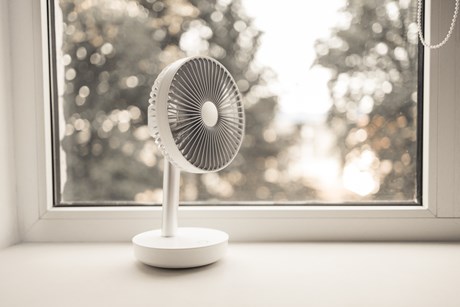
3. Use fans strategically
Many offices rely on fans as a first line of defence in the heat, but they often aren’t used efficiently.
It’s not just about turning a fan on - it’s about where you place that fan and how you use it.
With the right setup, even a basic fan can do the work of a far more expensive system.
What to do: Position desk or pedestal fans near windows or cooler areas - not in hot spots.
Why it works: Fans don’t cool the air; they move it. Used smartly, they can pull in cooler air from shaded areas or outdoors and push hot air out. Just pointing a fan randomly around the room often just stirs warm air.
Try this: Place a bowl of ice or a frozen water bottle in front of a fan for a DIY cooling boost.
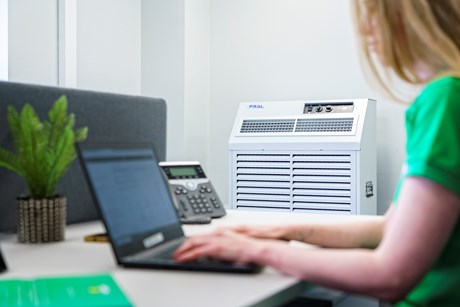
4. Invest in portable air conditioning
Air conditioning is rare in many UK workplaces, so when the temperature spikes, portable AC units can be a lifesaver. These compact systems give you more control over specific areas and offer relief when fans alone just don’t cut it - especially in places like converted office spaces or older buildings with poor insulation.
What to do: Use portable AC units in smaller spaces or during heatwaves. Renting can be a cost-effective option.
Why it works: These units cool individual rooms efficiently and don’t require full HVAC installations. They're ideal for server rooms, meeting areas, or solo workspaces that overheat.
Try this: If you're renting, opt for a unit with an exhaust hose that vents hot air outside - this makes a big difference in performance.

5. Bring in plants that naturally cool the air
It might surprise people to learn that some houseplants do more than just look nice - they can help cool your workspace naturally.
Is it going to be a cure-all solution? No, but especially in stuffy environments with limited airflow, the subtle cooling effect of certain plants adds up.
It’s an eco-friendly bonus that improves both comfort and wellbeing.
What to do: Add houseplants like ferns, peace lilies, and snake plants to your workspace.
Why it works: These plants release moisture into the air through a process called transpiration, which slightly cools their surroundings. They also purify the air, improving overall comfort.
Try this: Group several plants near windows or fans to enhance their cooling effect and circulate fresher air around the space.
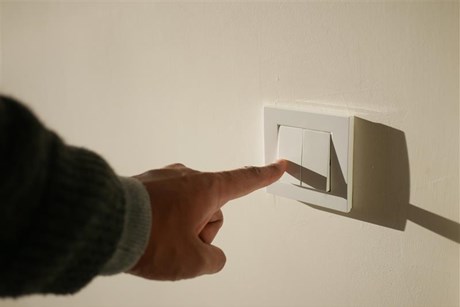
6. Switch off heat-generating equipment when not in use
We often forget just how much heat is generated by the tech we rely on daily.
Desktops, monitors, and printers are constantly radiating warmth into the room.
When you're trying to keep cool, minimising these internal heat sources is a critical but often missed step - especially in smaller offices with limited airflow.
What to do: Turn off monitors, printers, and other electronics when not needed - even on standby, they generate heat.
Why it works: Office electronics can raise room temperatures more than you'd expect. A few idle machines can make a small room feel stuffy fast.
Try this: Use smart plugs or timers to automatically shut off unused equipment after hours or during lunch breaks.
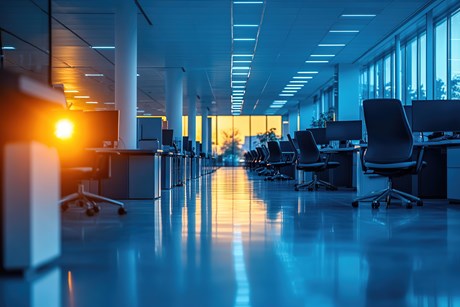
7. Limit heat-producing activities (and meetings!) during peak hours
Peak heat hours (usually midday to late afternoon) are when internal temperatures soar - and unfortunately, many offices run at full throttle right through them.
By rethinking when certain tasks happen, you can prevent unnecessary heat buildup and make the rest of the day far more bearable.
What to do: Avoid using ovens, heavy machinery or even running big meetings during the hottest part of the day (typically 11am to 4pm).
Why it works: These activities raise indoor temperatures just when you're fighting to keep them down. Rescheduling can help maintain a stable temperature and reduce cooling strain.
Try this: Shift batch printing, server updates or equipment maintenance to early morning or late afternoon.
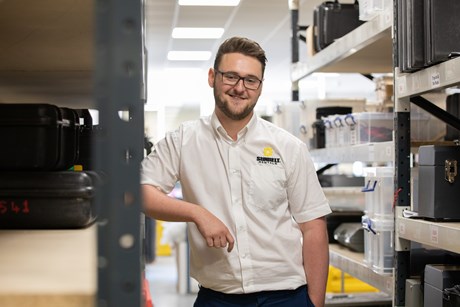
8. Embrace relaxed summer dress codes
It may sound simple, but what we wear has a big impact on how we feel during warm spells.
In the UK, where formal office dress is still common, rigid dress codes can actually make overheating worse.
Allowing for lighter, breathable attire can reduce the need for cooling measures - and improve morale, too.
What to do: Allow staff to wear light, breathable clothing during heatwaves. Cotton, linen, and moisture-wicking fabrics are best.
Why it works: Clothing traps body heat. Light, loose-fitting outfits help your body regulate temperature naturally, reducing dependence on AC.
Try this: Communicate to staff that you’re happy for them to swap their usual uniforms or dress codes up for polos, linen wear and summer dresses - just be clear on what's appropriate for your workplace culture.
9. Stagger working hours to avoid peak heat
The hottest part of the day doesn’t have to be the busiest.
In fact, rethinking the 9–5 model during summer can make a significant difference in comfort and energy use.
Flexibility isn’t just good for wellbeing - it’s a powerful tool for temperature management, especially in open-plan or sunlit offices.
What to do: Let employees start earlier and finish earlier, or vice versa, to miss the hottest hours of the day.
Why it works: Shifting work schedules reduces exposure to high heat and spreads the cooling load across a longer time, helping systems perform better and improving productivity.
Try this: Offer flexible start times between 7-9am and monitor which schedules lead to better comfort and efficiency.

10. Zone your cooling - don’t waste energy
Not every room needs to be cooled equally!
A common mistake is trying to cool an entire building when only a few people are using certain areas.
Zoning your efforts saves energy, reduces strain on equipment, and makes sure that the people who need cooling the most actually feel the benefit.
What to do: Focus cooling on spaces that are actually being used. Close doors to unused rooms and redirect airflow where it's needed.
Why it works: Trying to cool your entire office or building is inefficient - especially with fans or portable units. Cooling only the zones in use boosts efficiency and reduces costs.
Try this: Use signs or checklists to remind staff to close doors and turn off fans or AC in unoccupied rooms.
Thanks for reading
Keeping your office cool in the middle of a UK heatwave doesn’t have to be a losing battle.
With a bit of planning, a few smart adjustments, and the right equipment in the right places, you can create a comfortable environment that keeps your team focused, energised, and productive - even when the outside world is sweltering.
Of course, every workspace is different - sometimes, an open window or a few plants simply won’t be enough, and that’s where we come in!
We offer a wide range of cooling solutions for hire, from portable air conditioning units and evaporative coolers to high-performance fans and full HVAC temperature control systems for larger-scale or more complex environments.
Whether you're looking to keep a small office cool for a week or need reliable climate control for a critical workspace, we've got the equipment and expertise to help.
Get in touch today to discuss the best cooling solution for your space—before the next heatwave hits!

 Open your account online within 24 hours
Open your account online within 24 hours  Nationwide, next day delivery available
Nationwide, next day delivery available  Over 200 locations near you
Over 200 locations near you 